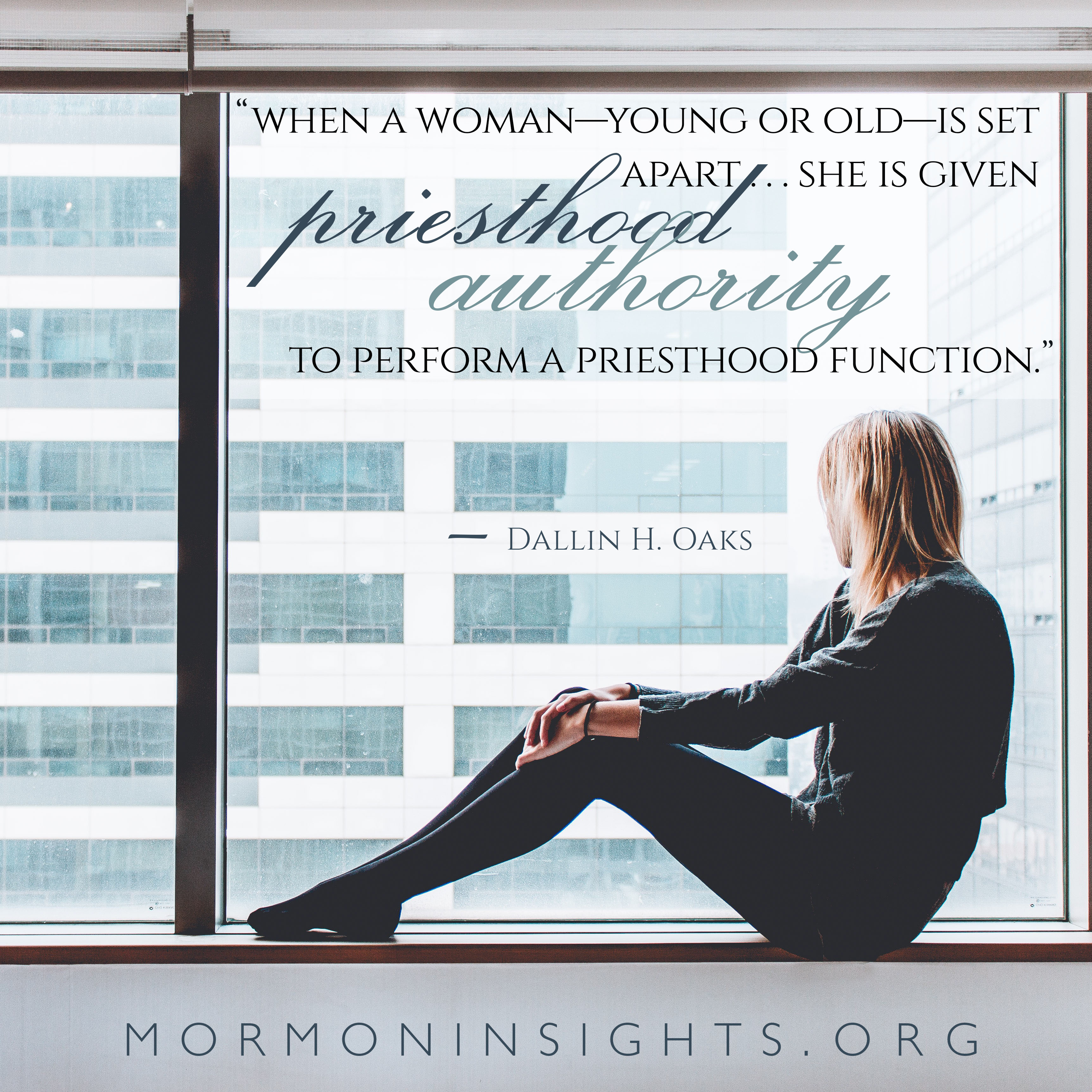Latter-day Saint men and women are equal in the sight of God. Both have access to priesthood authority to perform priesthood functions.
A string orchestra is made up of five sections: first violins, second violins, violas, cellos, and string basses. Sometimes it seems like one section is more important than the others. However, if all the sections don’t contribute, the harmony is lost—and with it a big part of what makes the music so great.
Just like sections in an orchestra, sometimes it seems like certain groups in the Church are less important, when in reality they have just as much value.
In an April 2016 conference talk entitled “The Keys and Authority of the Priesthood,” Elder Dallin H. Oaks addresses one area in which certain people are sometimes perceived as lesser—that of women and the priesthood. He notes that while women do not receive the priesthood itself, they do belong to the Relief Society, which is “a divinely established appendage to the priesthood.”
Women are able not only to receive the blessings of the priesthood from worthy priesthood holders but also to use some aspects of the priesthood’s power. Just as an orchestra’s melody may be primarily carried by the first violins but may jump from section to section, priesthood authority can be used by both men and women. Elder Oaks says, “When a woman—young or old—is set apart [to fulfill a calling], she is given priesthood authority to perform a priesthood function.” In other words, she too has the melody.
Read or watch Elder Dallin H. Oaks’s address “The Keys and Authority of the Priesthood” to find out more.
Source: lds.org
—Monica Allen, Mormon Insights
feature image of relief society general presidency (from left: sharon eubank, jean b. bingham, and reyna i. aburto) courtesy of lds media library
Find more insights
See Joseph Smith’s teachings about women and the priesthood.
Read a Mormon Insights article by Nicole Whitworth about how a single mother crossing the plains was able to claim priesthood blessings for herself and her children.
Read “Priesthood Power—Available to All” to learn what Linda K. Burton, then serving as president of the worldwide Relief Society of the LDS church, says about the priesthood.




This is a really great talk about the priesthood. The most important thing we can do when we have questions is to study and search for answers, and this talk definitely helped me understand the nature of the priesthood better. As women, we are achieving the same purposes by accessing the same power, even if it looks a little different.
I loved this article about the priesthood. Especially in this time when women seem to be particularly concerned about this aspect of the church, you summed it up perfectly. The analogy of the orchestra exemplifies this in a great way.
This talk is so powerful. It clarifies a lot of misconceptions. Also, I love the way you set up the talk.
Such an important talk from Elder Oaks clarifying the role of women and the priesthood. Thanks for the metaphor with the orchestra. I like the example of the melody being carried by different sections yet all of them are part of the same larger organization.
I love the analogy of the melody. The melody in a good piece of music isn’t always carried by the same voice, and the same is true for God’s work. Hearing from other voices makes it more interesting. The knowledge that women use priesthood authority also reconfirms to me that Heavenly Father loves his daughters just as much as he loves his sons.
Very interesting talk about the priesthood. I am glad that it clarifies misconceptions. I really enjoyed the music analogy.
As a musician, I love this. I play the tuba and the euphonium– two low brass instruments, and one that most people haven’t even heard of. I seldom, if ever, get the starring role in any piece of music. But I know that I am no less important than any other piece of the ensemble. If I weren’t there, people would notice and the piece would feel empty. So it is with my role in the gospel. I’ve never felt like a lesser member of the church because I don’t hold the priesthood. I know the Lord values me, and I know the church values me. The priesthood is not my role to play; there are other ways I can support this good work.
I love the orchestra analogy! This past semester at school, I have been studying a lot about women and the priesthood. I can’t wait to explor all of the other resources that were linked in this article. Because of my recent understanding, I can help other people—men and women—understand how women and the priesthood relate.
I wish that all those who struggle with the idea of women not being able to hold the priesthood would read this. I actually like to think of the priesthood as not so much the melody but the bass line. In music, songs without a bass line have no direction and no “power.” By being the constant presence and support for all parts of the music, the bass directs the tempo and the feeling of the song. The priesthood works like this in the Church. It is not a power that only men have access to. It helps and powers every part of the music.